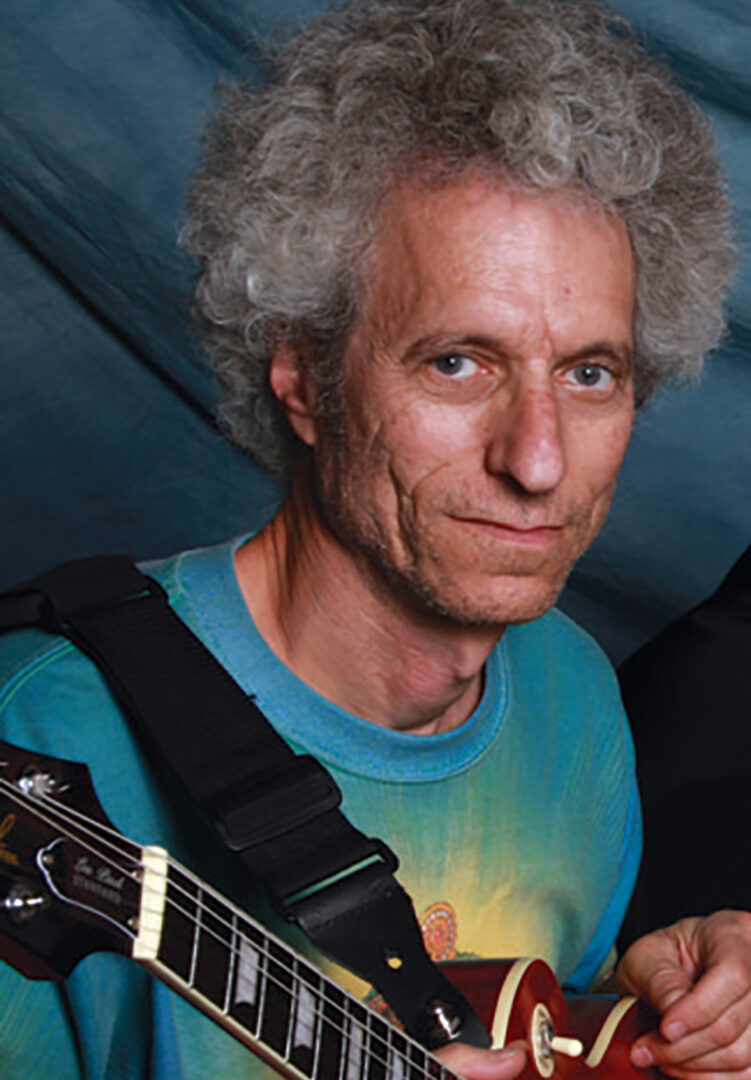
TUCSON, AZ – Rare indeed. Mix together electric guitar and a symphony orchestra for a musical experience seldom heard. Tucson composer and guitarist Pete Fine will perform his Concerto No. 2 for Electric Guitar and Orchestra on March 10 and 11 with the Southern Arizona Symphony Orchestra.
This is the first time Tucson audiences will hear this four-movement work, which was composed in 2011. The premier performance was in 2016 by the Symphony Orchestra of Rio Grande do Norte in Natal, Brazil, with Linus Lerner conducting and Fine as the soloist.
He said, “My goal in composing concerti for electric guitar is to create a piece of symphonic music that is challenging and exciting for electric guitar players – yet is melodically and emotionally appealing to traditional classical concertgoers. Guitar is my personal tool but the orchestra is my palette. Music is the very soul of my life. I have been influenced by a long line of great classical masters and I hope my compositions move people to experience all the emotions that make us human.”
Fine was born in New York City and began studying guitar at age 13. He moved to Tucson in 1974. His experience includes performing with ensembles of many different styles of rock and jazz-rock, as well as recording session and orchestra pit work. He’s considered a virtuoso acoustic and electric guitarist. He also is a self-taught composer and orchestrator. SASO previously performed Fine’s Landscapes both in concert and on its Celebration! CD that features the works of Tucson composers.
This concert program features SASO’s favorite soprano Christi Amonson, performing Barber’s Knoxville: Summer of 1915 and Poulenc’s Gloria with the 45-voice SASO Chorus. The orchestra also will perform with the winner of SASO’s annual Dorothy Vanek Youth Concerto Competition, which is scheduled for Feb. 17 and 18. Longtime SASO Music Director Linus Lerner conducts.
According to John Bawden’s program notes, “Poulenc’s very distinctive style expresses a wide range of emotions, from lyrical serenity to unashamed glee. His sense of humor and love of life shine through all his music, however solemn the text might be. One of his friends said of him, ‘There is in him something of the monk and the street urchin.’ The Gloria brilliantly expresses these characteristics, with its captivating mixture of solemnity and mischievous exuberance.”
Poulenc’s wealthy parents intended him for a business career in their family pharmaceutical company, and did not allow him to enroll at a music college. As a result, he was largely self-educated musically. He was a member of a pious Roman Catholic family in the south of France. His mother Jenny Poulenc was from a Parisian family with wide artistic interests. In Poulenc’s view, the two sides of his nature grew out of this background – a deep religious faith from his father’s family and a worldly and artistic side from his mother’s. Gloria was written in 1959, four years before his death.
Barber described his Knoxville: Summer of 1915 as a lyric rhapsody. The lush, evocative music is set to a 1938 prose poem by James Agee. Barber was struck by the uncanny similarity between his and Agee’s childhood – both were five years old in 1915 and were raised in a small town by loving parents and an artistic aunt and uncle. Barber paints an idyllic, nostalgic picture of Agee’s native Knoxville, Tennessee. Throughout the piece, Barber looks to the text for his melodic cues.
Opera News described soprano Christi Amonson’s sound as “liquid silver.” A longtime SASO favorite, she’s soloed with the orchestra frequently and accompanied SASO on its first tour of China. Amonson has won vocal competitions in Philadelphia, New York City and Seattle. In New York she sang with several opera companies and directed choirs for the Metropolitan Opera Guild’s Urban Voices Program. Amonson completed her doctorate in voice and theatre at the University of Arizona and now serves on the faculty of Troy University in Alabama.
The performance schedule is:
- March 10 at 7:30 p.m. at the Desert View Performing Arts Center, 39900 S. Clubhouse Dr. in SaddleBrooke. Tickets are $24 in advance or $25 at the door. They can be purchased online at http://tickets.saddlebrooketwo.com or by calling (520) 825-2818.
- March 11 at 3 p.m. at St. Andrew’s Presbyterian Church, 7575 N. Paseo del Norte in northwest Tucson. Tickets are $23 and can be purchased at sasomusic.org, by calling (520) 308-6226 or at the door. Students age 17 and younger can reserve complimentary tickets.
With SASO you can expect the unexpected. Maestro Lerner challenged himself to not repeat any major work in his first decade of programming for SASO. He has conducted SASO musicians both here and abroad, including two China tours, one tour of his native Brazil and several opera festivals in Mexico – three in Oaxaca and two in San Luis Potosí. Lerner completed a doctor of music degree at the UA.
The SASO season continues with the final concert on April 14 and 15. Tucson Symphony Orchestra concertmaster Lauren Roth joins SASO to perform Wieniawski’s Violin Concerto No. 2. Also on the program are Theofanides’ Rainbow Body and Rachmaninov’s Symphonic Dances.
Philanthropist and musician Dorothy Dyer Vanek is SASO’s season sponsor for the 11th consecutive year. Vanek also underwrote both of SASO’s CDs – “Celebration!” which features the music of Tucson composers – and the well-reviewed premiere recordings of two viola concertos with soloist Brett Deubner on the Naxos label.
SASO is a vital community resource that unites performers and audiences through a passion for music. Founded in 1979, this orchestra presents world premieres, seldom-performed treasures and classical favorites. For more information call (520) 308-6226 or visit www.sasomusic.org.
